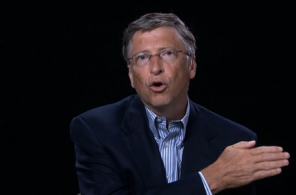
While we’re mostly unfamiliar with the French sport of Pétanque, Mantis of Destiny‘s photo above makes us think it’s definitely worth looking into…

While we’re mostly unfamiliar with the French sport of Pétanque, Mantis of Destiny‘s photo above makes us think it’s definitely worth looking into…
View Larger Map
All the electricity from Seattle City Light’s renewable power program goes into the grid, so it’s not actually possible to specify what flavor of electricity you prefer to get at your outlets: wind, solar, or landfill methane.
But it’s still true that, for the past two years, about 5,600-homes-worth of Seattle electricity (six megawatts) has come from the Columbia Ridge landfill‘s methane production. Seattle sends about 400,000 tons of trash to Columbia Ridge annually–it’s one of our nation’s largest landfills.
In December 2009, landfill operator and renewable power generator Waste Management brought a $10-million electrical power plant online, fueled by the methane gas the landfill’s organic decay produces. For years, that methane had simply been burned off (“flared”)–you had to do something with it, as it can suffocate or even explode if allowed to build up. Even our waste was generating greenhouse gases.
But thanks to renewable-energy pushes like Washington’s I-937–which requires larger electric utilities to get 15 percent of their output from renewable energy by 2020–burning methane to create electricity became a feasible energy source. The Los Angeles Times counted some 500 electricity-producing landfills across the U.S. in 2010.
In January 2010, Seattle City Light bought all six megawatts of Columbia Ridge’s capacity, for the next 20 years. (Landfills don’t supply methane forever–eventually the organic matter present has decomposed.)
City Light’s Scott Thomsen says that while six megawatts is a drop in the bucket of Seattle’s electricity needs, methane-powered electricity is more important than it might seem, because it can meet baseload demands. Columbia Ridge’s turbines produce their electricity day and night, day in and day out, as opposed to solar (daytime only) and wind (most productive evenings and overnight).
It’s all about the “volume and shape” (see daily power graph) of the electricity, Thomsen says. Because electricity is not practically speaking storable, from a utility’s perspective, 24/7 sources are more valuable. How much more valuable? I asked Thomsen about kilowatt-hour cost estimates, but he couldn’t say, beyond that the Columbia Ridge contract was “competitive” with other renewable energy sources.

“I’m an optimist,” Bill Gates says, on the subject of nuclear power. “I see materials advances, simulations, better understanding of the scientific phenomena.”
Two things hold up innovation in the nuclear sector: First, the enormous lead-time it takes to research new technology and deploy it. And secondly, a global potpourri of regulations that can constrain innovative technology in favor of tried-and-true reactor design.
U.S. Deputy Secretary Daniel Poneman got Bill Gates on the video-chat line for the International Framework for Nuclear Energy Cooperation meeting in Warsaw, and the resulting interview is now posted on Gates Notes. The theme of the conversation is “Nuclear Energy after Fukushima,” and Gates finds two controversial lessons there.
While acknowledging that the Fukushima reactors’ failure post-earthquake-and-tsunami was a “tragedy,” Gates gingerly characterizes to the overall safety record of Fukushima as being commendable for a plant commissioned in 1971. This leads to his second point: that governmental regulation is biased toward the devil of known reactor design, rather than innovative solutions that take into account advances in software simulation (making it possible to assess virtual performance in a hurricane, earthquake, or tsunami).
“As I look at the energy sector I see that in some ways it’s more complicated than the IT sector where I spent most of my career,” says Gates. He lists the drawbacks of global regulatory complexity, the lead time before return on investment, the necessarily high bar for safety.
Though people may think of the Bill & Melinda Gates Foundation as health-driven, its mission is to improve lives globally through innovation. As he considered the challenges the world’s poor face, says Gates, “I realized the very central role that energy plays in improving their livelihood. We need breakthroughs.”
His advice for governments? You’re under-funding investment in pure energy research by a factor of three or more. This wouldn’t require a gigantic tax on the energy sector, just a few percent, and certainly a lower number than a carbon tax would likely impose. Energy innovation is unlike other areas because of its lengthy time-to-market–if you try to offer incentives on the scale of other industries, you’ll fail.
“We need to have hundreds of companies trying out different things in each sector,” Gates argues, including solar, nuclear, wind, clean coal, and more. Cheap energy that doesn’t carry the greenhouse gas burden of today’s energy sources needs to come pretty quickly.
That preference for implementation seems to have established Gates’ primary bet on nuclear power (he namechecks TerraPower twice). “When you look at the numbers and you say, what could be significantly cheaper than what we have today, and located in every area, nuclear is one of the few that may be able to achieve that.”
He has invested in solar power, but is troubled by its disadvantages as a global solution: The “solar guys” still need to make solar power ten times as cheap, and solve storage and transmission challenges.
In nuclear, “I think you have to go for a big win, because you’re going to have your money tied up for decades.” It will be crucial to harmonize regulations globally, because you need a global market size to justify the size of private investment. Urges Gates: “We’re not gonna have a ton of nuclear start-ups, but we need more.”